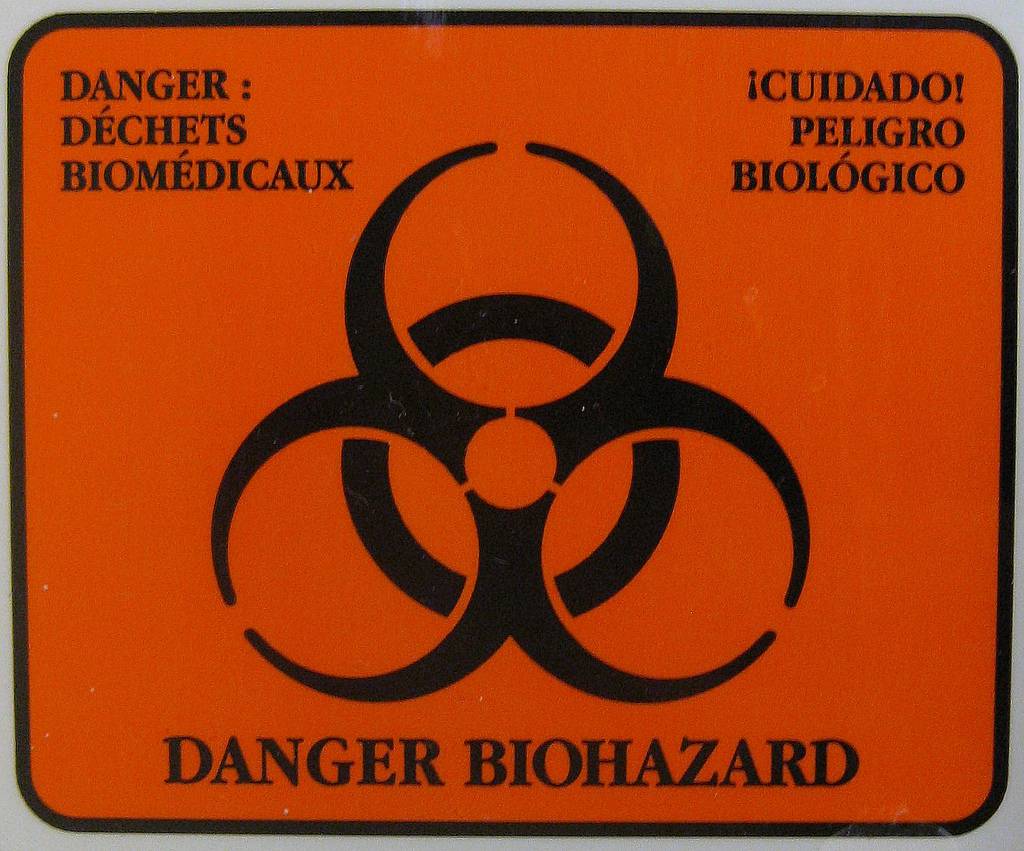Biohazard waste is generally defined as any waste contaminated with potentially infectious agents or materials that may pose a threat to public health or the environment.
The University of Tennessee provides some examples of solid biohazardous waste. While this is not an exhaustive list, it should give you a general idea of what biohazardous waste is:
- Gloves and other disposable PPE (personal protective equipment) contaminated with specimen or culture material.
- Plastic ware such as pipettes or pipette tips, culture plates, specimen vials, etc. that are contaminated with biological specimens, bacterial and cell culture material, or nucleic acids.
- Towels and bench paper that are biologically contaminated (Note: Bench paper that is used in areas where samples or cultures are opened and manipulated must be regarded as biologically-contaminated and therefore removed and managed as solid biohazardous waste)
- All culture or sample containers that are contaminated with biological materials
As I mentioned above, there are many more biohazardous wastes, especially in laboratory settings, that are not listed. The rule of thumb is if it’s “saturated” with blood or infectious bodily fluids it is biohazardous waste.
Find Out How Much You Can Save Instantly.
Try our on-line savings calculator.
Step 1: Identify The Type of Waste
Biohazard or infectious waste disposal is generally more expensive than your regular garbage disposal. There are many reasons for this, but the main one is there are many more steps biohazardous waste has to go through before it meets the landfill. Mainly, it has to be sanitized and put into a specialized landfill called a sanitary landfill specially made to stop animals from taking the waste, and to stop water run-off.
Because of this increased cost, it is worth the extra time deciding if the waste you are about to throw away should go into a red bio-bag or the regular garbage.
OSHA provides a more comprehensive list for biohazardous waste regulations, but the shortcut is:
- Was the item used to hold blood?
- Is the item saturated or dripping in blood?
- Could the item be infectious?
- Did the item come from a contaminated room?
- Did the item come from a surgical procedure?
If you answer yes to any of the above, it is safe to throw the waste into a red biohazard bag UNLESS it can puncture the bag, in which case it goes into a sharps container.
Step 2: Storing Biohazardous Waste
After a red biohazard bag is filled up, it must be put into another container for transportation. The reason we do this is to 1) comply with local and federal regulations and 2) to stop any leakage or spillage of waste.
Most of the time when a bio bag is full it is put into a specialized cardboard box designed to transport medical waste. Some states, like California, require that the waste is put into a specialized plastic tote. It all depends on the regulations in each state.
Step 3: Disposing of The Waste
This is the easy part! Once the waste is put into the correct container, you simply have your medical waste disposal company come and pick it up. Of course, all of our haulers are trained for proper transportation of waste.
If you’re interested in what happens after the waste is picked up, check out my blog about the journey waste goes through after it’s picked up!
Image Source: Flickr



